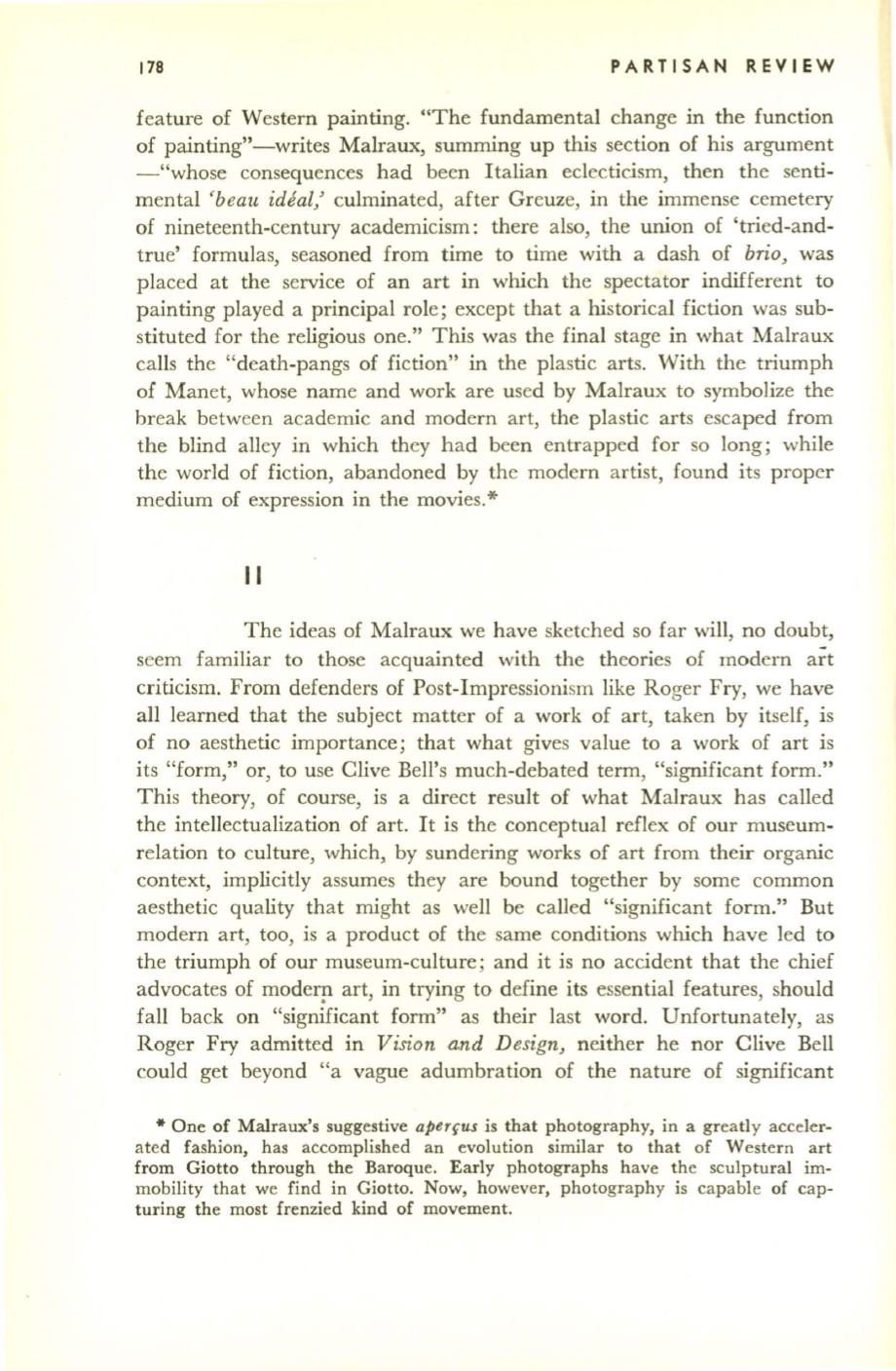
178
PARTISAN REVIEW
feature of Western painting. "The fundamental change in the function
of painting"-writes Malraux, summing up this section of his argument
-"whose consequences had been Italian eclecticism, then the senti–
mental
'beau ideal,'
culminated, after Greuze, in the immense cemetery
of nineteenth-century academicism: there also, the union of 'tried-and–
true' formulas, seasoned from time to time with a dash of
brio,
was
placed at the service of an art in which the spectator indifferent to
painting played a principal role; except that a historical fiction was sub–
stituted for the religious one." This was the final stage in what Malraux
calls the "death-pangs of fiction" in the plastic arts. With the triumph
of Manet, whose name and work are used by Malraux to symbolize the
break between academic and modern art, the plastic arts escaped from
the blind alley in which they had been entrapped for so long; while
the world of fiction, abandoned by thc modern artist, found its proper
medium of expression in the movies.
*
II
The ideas of Malraux we have sketched so far will, no doubt,
seem familiar to those acquainted with the theories of modern art
criticism. From defenders of Post-Impressionism like Roger Fry, we have
all learned that the subject matter of a work of art, taken by itself, is
of no aesthetic importance; that what gives value to a work of art is
its "form," or, to use Clive Bell's much-debated term, "significant form."
This theory, of course, is a direct result of what Malraux has called
the intellectualization of art.
It
is the conceptual reflex of our museum–
relation to culture, which, by sundering works of art from their organic
context, implicitly assumes they are bound together by some common
aesthetic quality that might as well be called "significant form." But
modern art, too, is a product of the same conditions which have led to
the triumph of our museum-culture; and it is no accident that the chief
advocates of moderp art, in trying to define its essential features, should
fall back on "significant form" as their last word. Unfortunately, as
Roger Fry admitted in
Vision and Design,
neither he nor Clive Bell
could get beyond "a vague adumbration of the nature of significant
*
One of Malraux's suggestive
aperfus
is that photography, in a greatly acceler–
ated fashion, has accomplished an evolution similar to that of Western art
from Giotto through the Baroque. Early photographs have the sculptural im–
mobility that we find in Giotto. Now, however, photography is capable of cap–
turing the most frenzied kind of movement.


